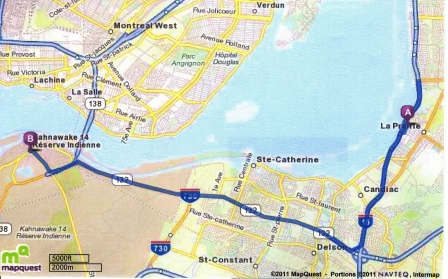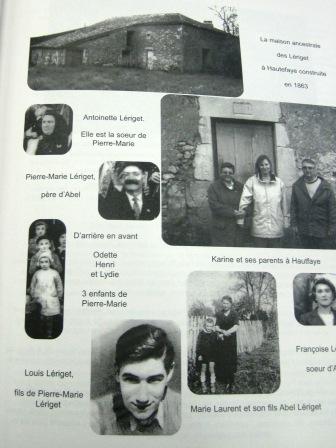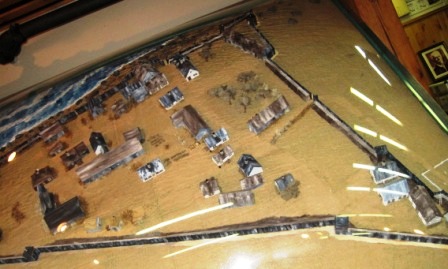From Wikipedia: French Jesuits were the first Europeans to occupy the area, which was named La Prairie de la Magdelaine but was also called François-Xavier-des-Prés. The land was given to the Jesuits by Jacques de La Ferté and the Company of One Hundred Associates in 1647. It is in La Prairie that the story Kateri Tekakwitha took place. In 1668, the site was named Kentaké, the Iroquois name for "at the prairie". In the beginning of modern Quebec history, the territory of La Prairie would be visited on numerous occasions by Iroquois and English settlers from New York, among others at the time of the Anglo-Iroquois expedition of Pieter Schuyler in 1691, who commanded two battles on August 11, 1691.
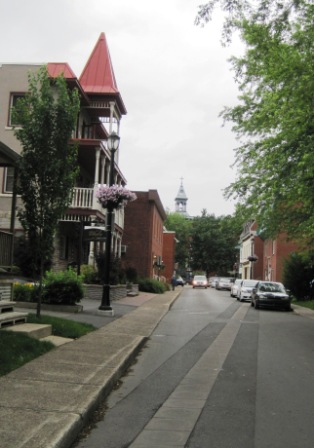
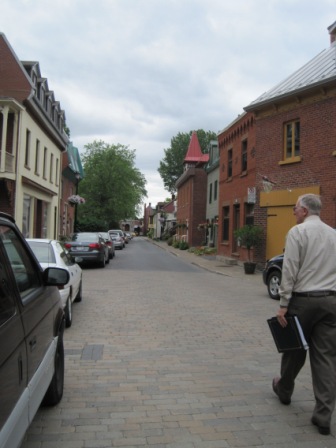
Shrine of Blessed Kateri
By 3:00 we were listening to the gps lady for directions to the Kahnawake reservation where Blessed Kateri Tekakwitha is buried. After fleeing Fonda, New York (site of National shrine to Blessed Kateri: http://www.katerishrine.com/), she arrived at LaPrairie in 1676, about ten years before Clement arrived there. She died in Kahnawake in 1680. The church was closed, but we took pictures of it, the pedestal with a missing statue of Blessed Kateri, and a few other items.

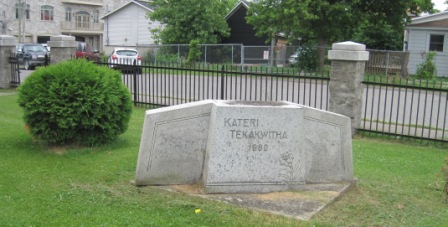
Pedestal with poor reservation neighborhood in background.
FORT REMY: LACHINE
Our next genealogical quest was to find the site of Clement's fight with and capture by the Iroquois in 1689. Our research led us to a small city park, "parc des Sts. Anges" which was located across the St. Lawrence River from Kahnawake. The gps wasn't much help because we didn't have an exact address. The park was located at the foot of Rue St. Maria, so we used that on the gps. We ended up in a rough neighborhood. Sure enough, the park was at the end of a cul de sac and extended nearly down to the river. We found a small replica of the chapel that was built within the walls of Fort Remy. This was very close to the spot where Clement was captured.
Fort Remy was a site of special importance to the fur trade. It was known as the fort of Lachine, but it was renamed in honor of Father Remy, priest of the parish of Saints-Anges of Lachine. The fort was built between 1672 and 1673. The first building comprised a ground floor, two stages, a forging mill and a bakery. A well was situated in the courtyard. The fort was destroyed when the Montreal aqueduct was built in 1873.
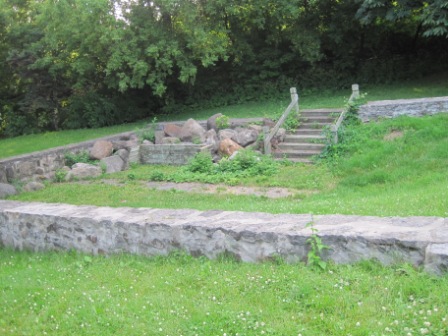
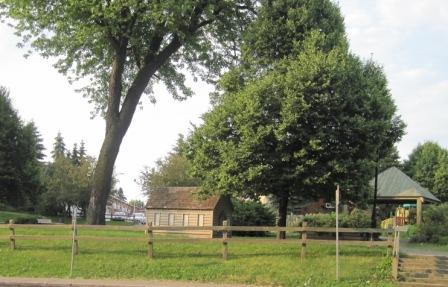
LAPLANTE STREET
Not far from the site of Fort Remy we found a street sign in Montreal recognizing the LaPlante name (Rue Laplante) as well as Clement's name (Rue Clement).
LACHINE
Lachine, apparently from French la Chine (China), is often said to have been named in 1669, in mockery of its then owner Robert Cavelier de LaSalle, who explored the interior of North America, trying to find a passage to Asia. When he returned unsuccessful, he and his men were derisively named les Chinois (Chinese). The name was then adopted when the parish of Saints-Anges-de-la-Chine was created in 1678. On August 5, 1689, more that 1200 Mohawk warriors raided the small village and burned it to the ground in retaliation for the ravaging of the Seneca lands by governor Denonville and his men. The Lachine massacre left 80 dead. In retaliation for this, Clement and other French marines fought the Indians on the next day. It was then that Clement was captured by the Indians.
The Lachine rapids are nearby. These rapids prevented early explorers from proceeding on the St. Lawrence River in search of China via the illusive Northwest Passage. The rapids are another link to Clement and other LaPlante Canadian ancestors. Today they are the destination for thrill seekers on rafts and jet boats.
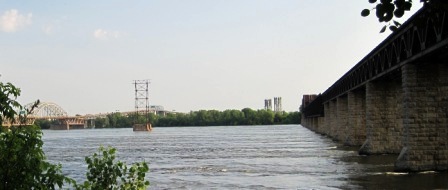
Museum Pointe-a-Calliere
Another genealogical must was Museum Pointe-a-Calliere. We wandered through archaeological digs which uncovered Montreal in its earliest days when Clement was fighting Indians, enslaved by them, and later settling across the St. Lawrence River at LaPrairie. It offered a fort with better protection from the Iroquois than the Montreal settlement did at the time.
